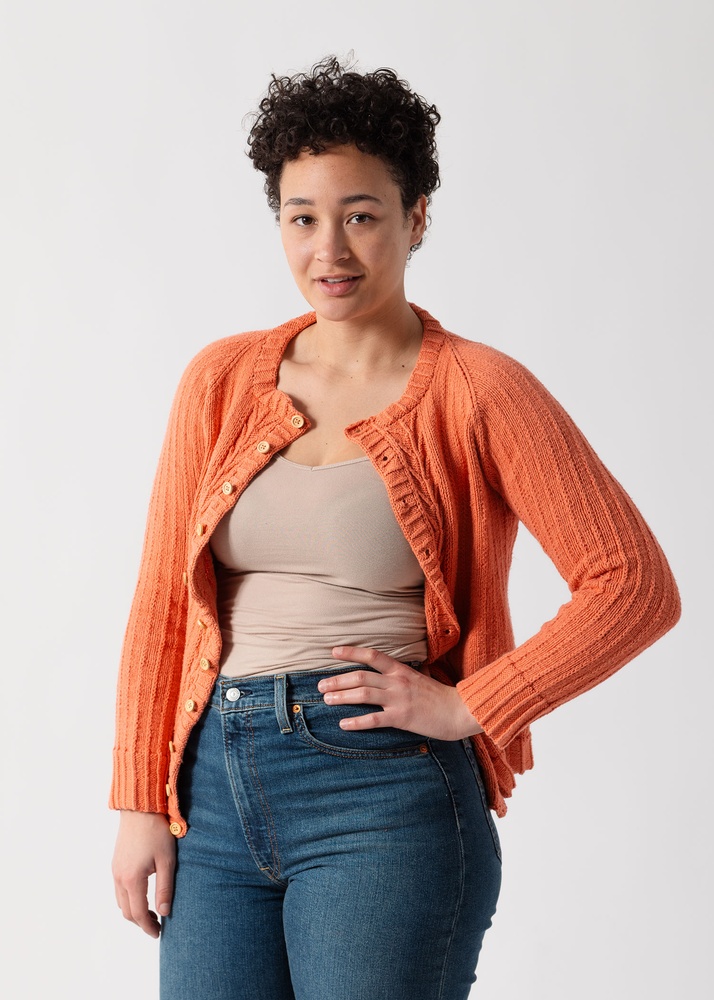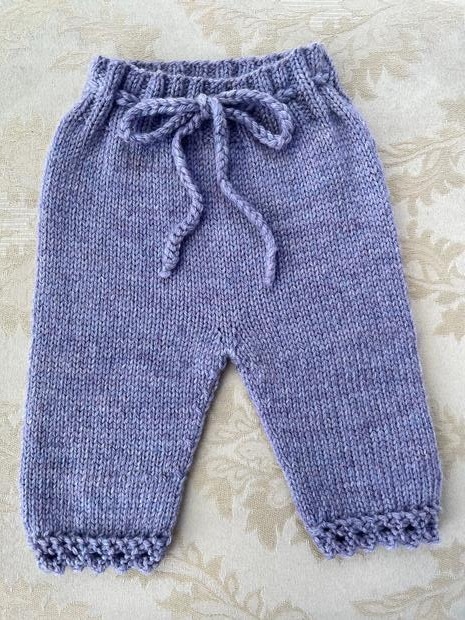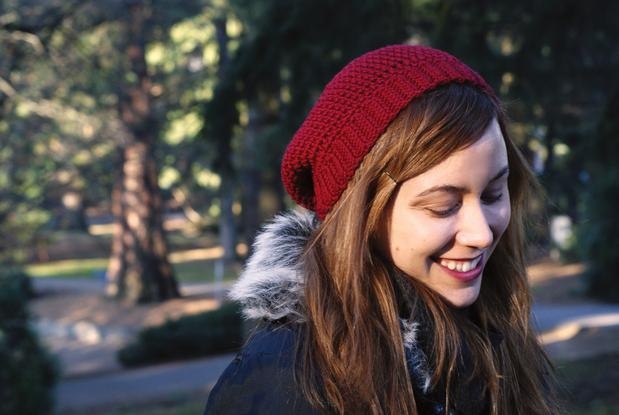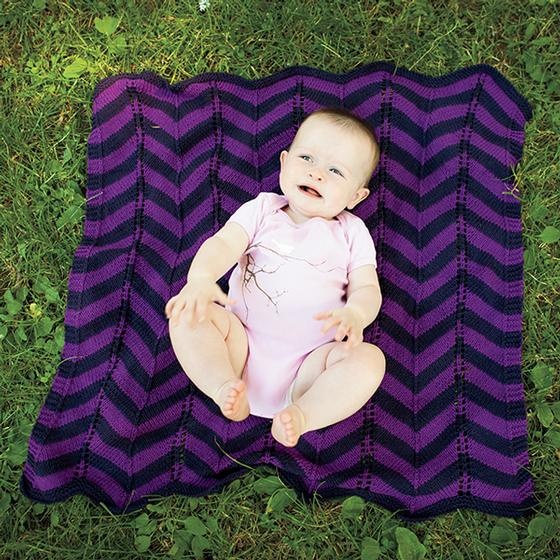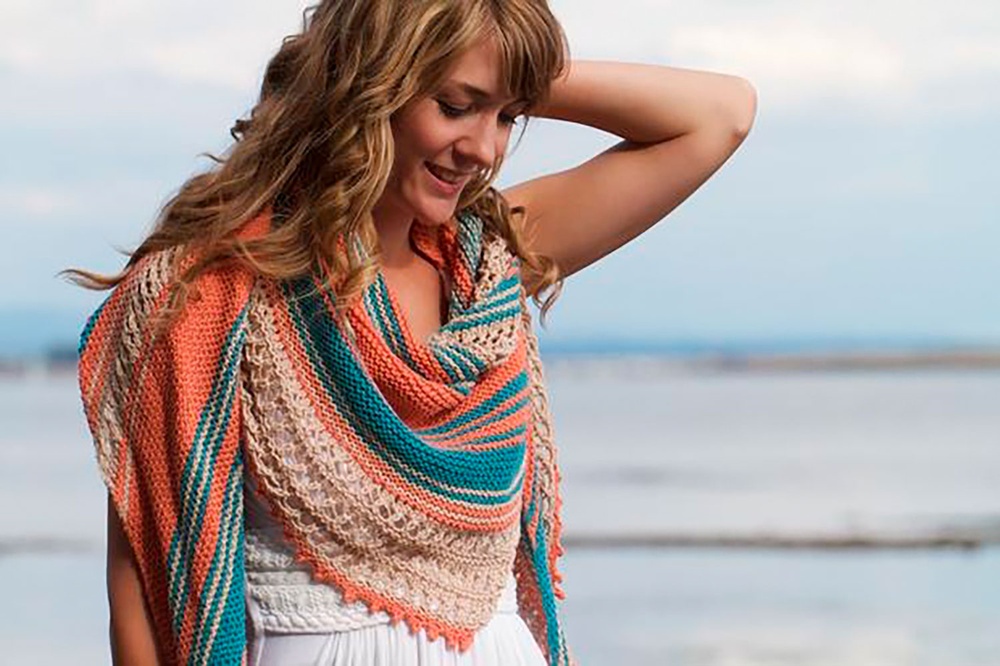What Is DK Weight Yarn
What Is DK Weight Yarn?
DK weight yarn is the perfect middle ground in knitting, offering faster progress than fingering weight while maintaining better stitch definition than worsted weight, making it ideal for sweaters, baby knits, and colorwork projects.
If you've been wondering whether DK weight is worth adding to your yarn stash or you're confused about when to choose it over other weights, I'm here to break it down for you. DK has become one of my go-to choices for knitted gifts because it strikes that sweet spot between detail and speed.
The Basics: DK Weight Facts
Weight Category: 3 (Light)
You'll see it called: DK, light worsted, 8-ply (in Australia)
Typical yardage: 225-300 yards per 100 grams
Wraps per inch: 11-13 around a ruler
DK weight sits comfortably in the middle of the yarn weight spectrum, lighter than worsted but heavier than sport weight. If you're still figuring out how different yarn weights work together in your knitting, check out my complete guide on [Understanding Yarn Weights] for the full picture. Make sure to check out the free printable Fiber Arts Quick Guide below. Also make sure and follow me over on Ravelry.
But What Does It Mean?
DK stands for "Double Knit" - it refers to the traditional British yarn weight classification system.
Originally, DK yarn was literally double the thickness of single knit yarn (which was similar to today's sport weight). The "double knit" term comes from this doubling of the yarn thickness, not from a specific knitting technique.
In modern yarn classifications:
DK weight is Category 3 (Light)
It typically has 11-13 wraps per inch
Gauge is usually 21-24 stitches per 4 inches
Uses US needle sizes 5-6 (3.75mm-4.25mm)
The term "DK" has stuck even though we now classify yarns more by weight categories and gauge rather than the historical "single knit" vs "double knit" system. You might also see DK weight called "light worsted" in some regions, but they're the same thing.
So when you see "DK weight yarn," you're seeing a remnant of traditional British yarn terminology that's become the standard way to describe this particular yarn thickness worldwide.
Get The Guide
Ready to stop feeling lost every time you pick up needles or thread? This guide covers the core techniques, tools, and terms for knitting, crocheting, weaving, and simple sewing. No more guessing, just clear steps and beginner checklists so you can actually start (and finish) projects you love.
Disclosure
Some links on FiberMaiden are affiliate links. When you click and purchase, I may earn a small commission at no extra cost to you. I partner only with brands and tools I trust and use in my own kitchen, studio, and garden. Your support means a lot.
Gauge and Needle Sizes That Work
Here's what to expect when working with DK weight yarn:
Typical gauge: 21-24 stitches per 4 inches in stockinette stitch
US needle sizes: 5-6 (that's 3.75mm-4.25mm)
Most common: US size 6 (4mm) is the sweet spot for many DK yarns
I always recommend swatching with DK weight, especially for fitted garments. The gauge range might seem narrow, but that one-stitch difference per inch adds up quickly across a sweater front. Trust me, a quick swatch saves hours of frustration later.
When DK Weight Makes Perfect Sense
You want the best of both worlds. DK weight knits up faster than fingering or sport weight, but still shows stitch detail better than chunky yarns. It's efficiency without sacrificing quality.
Baby and kids' knits are your thing. DK creates fabric that's substantial enough to be practical but soft enough for sensitive skin. The gauge works perfectly for tiny sweaters and blankets.
Colorwork is calling your name. Many traditional Fair Isle and intarsia patterns use DK weight because it creates clear color definition without being too bulky.
You're knitting for everyday wear. DK weight sweaters and cardigans have great drape and wearability - not too heavy, not too delicate.
Projects That Love DK Weight
Sweaters and Cardigans
This is where DK weight really shines. The fabric has enough body to hold its shape but isn't so heavy that it's uncomfortable to wear. Perfect for fitted pullovers, cozy cardigans, and anything you want to layer. The Twig and Twine Cardigan by Emily Kintigh is a great DK weight pattern option. I love the ribbing.
Baby and Children's Knits
DK weight is practically made for little ones. Soft enough for baby skin, sturdy enough to survive toddler adventures, and quick enough that you can actually finish projects before kids outgrow them. I have made dozens of these Basic Baby Pants by Susan M Gallbraith. Very fast knit that make a great baby shower gift.
Hats and Accessories
DK creates hats with great structure that aren't too bulky under hoods. Scarves have nice drape, and mittens are warm but not overly thick. I love a slumpy hat pattern like this Camus Crochet Hat by Jenny Catchings.
Blankets and Throws
Whether you're making a baby blanket or a lap throw, DK weight gives you coverage without excessive weight. The fabric breathes well but still provides warmth. This free Chevron Cherub Wrap by Lisa Seifert would also make a nice present.
Colorwork Projects
Traditional Fair Isle sweaters, striped scarves, and intarsia designs work beautifully in DK weight. The colors stay distinct without creating overly thick fabric. If you are feeling up to it I think this Beachcomber Shawl by Chelsea Berkompas is stunning. I love the colors in the main picture.
Get 3 Free Recipe Sheets
Ready for recipes that don't require a culinary degree to follow? Get seasonal recipe sheets designed for real kitchens and busy lives, the kind that work even when your kids are asking for snacks mid-prep.
Smart Substitutions with DK Weight
DK instead of worsted: Use needles one size smaller than the pattern calls for. You might need to adjust stitch counts slightly, but this substitution usually works well.
DK instead of sport weight: Go up one needle size and expect a more relaxed fabric. Perfect when you want a drapier version of a fitted design.
When to avoid substituting: Don't try to substitute DK for fingering weight or chunky yarns. The gauge differences are too significant to make easy adjustments.
Always swatch when substituting yarn weights. What looks like a simple swap on paper might completely change your fabric hand and fit.
Choosing Quality DK Weight Yarn
Check the twist. Well-made DK yarn has consistent twist that creates even fabric. Avoid yarns that look uneven or feel lumpy.
Consider the fiber content. Wool DK has great stitch definition and elasticity. Cotton DK creates crisp, structured fabric. Blends often give you the best of both worlds.
Think about your project. Superwash wool for kids' clothes that need frequent washing, pure wool for sweaters that benefit from blocking, cotton for summer knits.
Working Successfully with DK Weight
Needle choice matters. Bamboo needles work well for most DK projects, while metal needles are great if you're a tight knitter or working with slippery fibers.
Plan your gauge carefully. That 21-24 stitch range gives you flexibility, but know where your fabric falls in that range for the best results.
Embrace the speed. DK knits up noticeably faster than finer weights. It's satisfying to see real progress on larger projects.
The Reality of DK Weight
Let's be honest about what makes DK weight special and where it might not be the best choice:
The good: Faster than fine yarns, more detail than chunky weights, widely available, works for most skill levels.
The challenging: Not as lightweight as fingering weight for delicate projects, not as quick as worsted for super-fast knits.
The verdict: DK weight is the reliable middle child of yarn weights. It might not be the most exciting choice, but it consistently delivers great results.
Making DK Weight Work for You
DK weight yarn is incredibly versatile and forgiving. Whether you're knitting your first sweater or your fiftieth, DK offers that perfect balance of workability and results.
The key is understanding when DK weight serves your project best. For everyday sweaters, baby knits, colorwork, and most accessories, DK weight delivers professional-looking results without the time investment of finer yarns or the bulk of heavier weights.
If you're building a yarn stash, DK weight deserves a place in your collection. It's the yarn weight that consistently works when you need reliable, wearable results with reasonable time investment.
Fiber Arts Quick Guide
One page for yarn weights, needle & hook sizes, gauge basics, and quilt math. Keep within reach while you work.
Yarn weights at a glance
| Weight | CYC # | Knit gauge (sts/4 in) • Needles US | Crochet gauge (sts/4 in) • Hook |
|---|---|---|---|
| Lace | 0 | 33–40+ • 000–1 | 28–36+ • Steel/B–C |
| Fingering / Sock | 1 | 27–32 • 1–3 | 21–32 • B–E (2.25–3.5 mm) |
| Sport | 2 | 23–26 • 3–5 | 16–20 • E–7 (3.5–4.5 mm) |
| DK | 3 | 21–24 • 5–7 | 12–17 • 7–I (4.5–5.5 mm) |
| Worsted | 4 | 16–20 • 7–9 | 11–14 • I–K (5.5–6.5 mm) |
| Bulky | 5 | 12–15 • 9–11 | 8–11 • K–M/N (6.5–9 mm) |
| Super Bulky | 6 | 6–11 • 11–17 | 5–9 • M/N–Q (9–15 mm) |
| Jumbo | 7 | 1–6 • 17+ | 0–5 • Q+ (15 mm+) |
Always swatch. Fiber content, twist, and your tension change gauge.
Needle and hook conversions
Knitting needles (US ↔ mm)
| US | mm |
|---|---|
| 0 | 2.00 |
| 1 | 2.25 |
| 2 | 2.75 |
| 3 | 3.25 |
| 4 | 3.50 |
| 5 | 3.75 |
| 6 | 4.00 |
| 7 | 4.50 |
| 8 | 5.00 |
| 9 | 5.50 |
| 10 | 6.00 |
| 10.5 | 6.50 |
| 11 | 8.00 |
| 13 | 9.00 |
| 15 | 10.00 |
Crochet hooks (Letter ↔ mm)
| Hook | mm |
|---|---|
| B | 2.25 |
| C | 2.75 |
| D | 3.25 |
| E | 3.50 |
| F | 3.75 |
| G | 4.00 |
| 7 | 4.50 |
| H | 5.00 |
| I | 5.50 |
| J | 6.00 |
| K | 6.50 |
| L | 8.00 |
| M/N | 9.00 |
| N/P | 10.00 |
Gauge and swatch basics
- Knit or crochet a 6 × 6 in swatch. Wash and lay flat to dry.
- Measure the center 4 in square. Count stitches and rows.
- Stitches per inch: stitches in 4 in ÷ 4. Rows per inch: rows in 4 in ÷ 4.
Cast on = target width (in) × stitches per inch + 2 edge stitches.
Rows to length = target length (in) × rows per inch.
Quilt and sewing quick math
- Seam allowances: quilting 1/4 in • garments 5/8 in
- Half-square triangles (HST): cut size = finished size + 7/8 in (or add 1 in and trim to square)
- Quarter-square triangles (QST): cut size = finished size + 1 1/4 in
- Binding estimator: total length = perimeter + 12 in; strip count = ceil(total ÷ WOF). Typical strip width 2.5 in
- Prewash tips: prewash reds/darks. Press, square the grain, then cut.
Labeling and project notes
- Yarn or fabric source, colorway, lot, and fiber content
- Gauge and needle or hook size
- Pattern name and size adjustments
- Wash and care instructions
© FiberMaiden • www.fibermaiden.com



